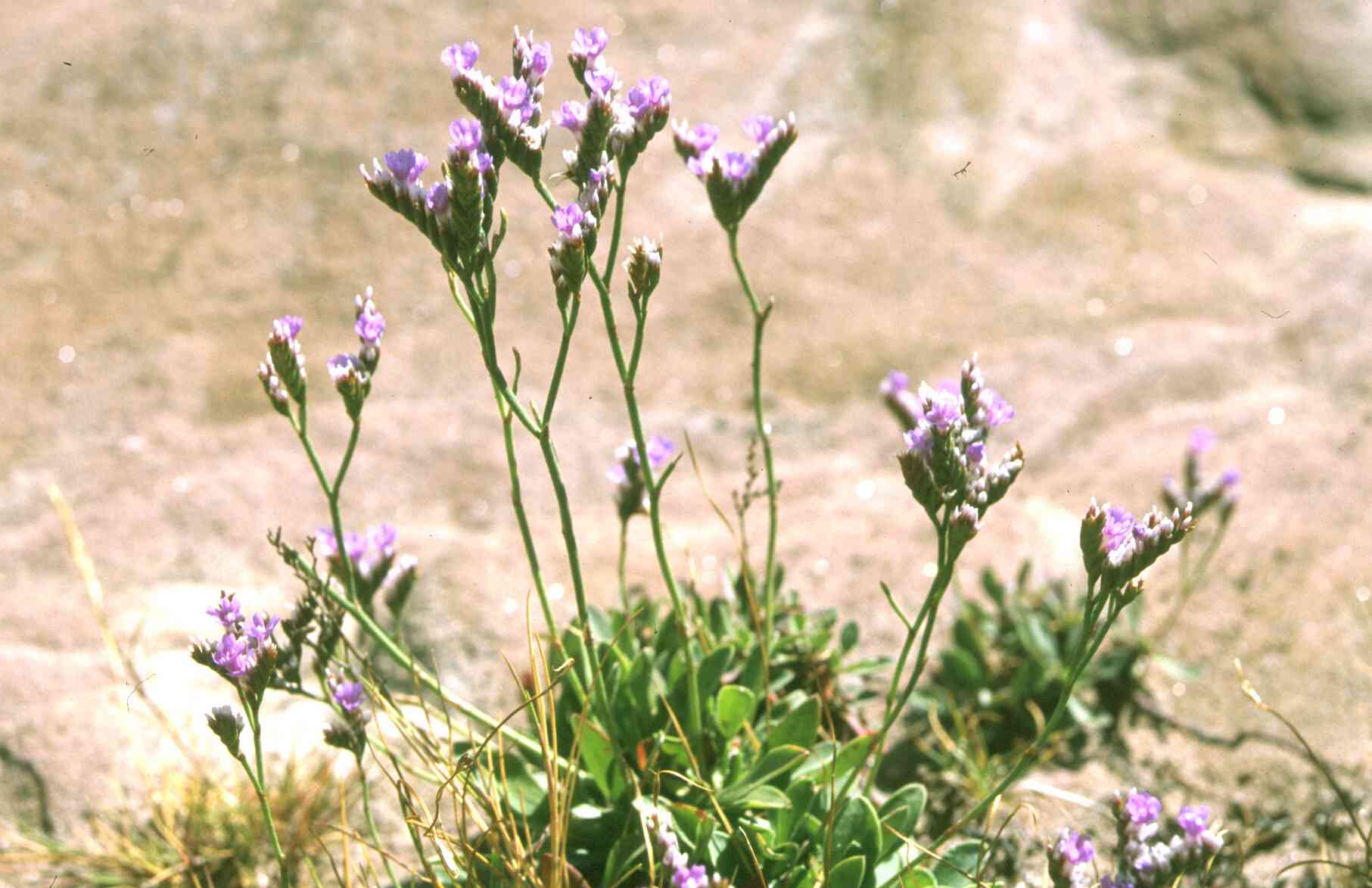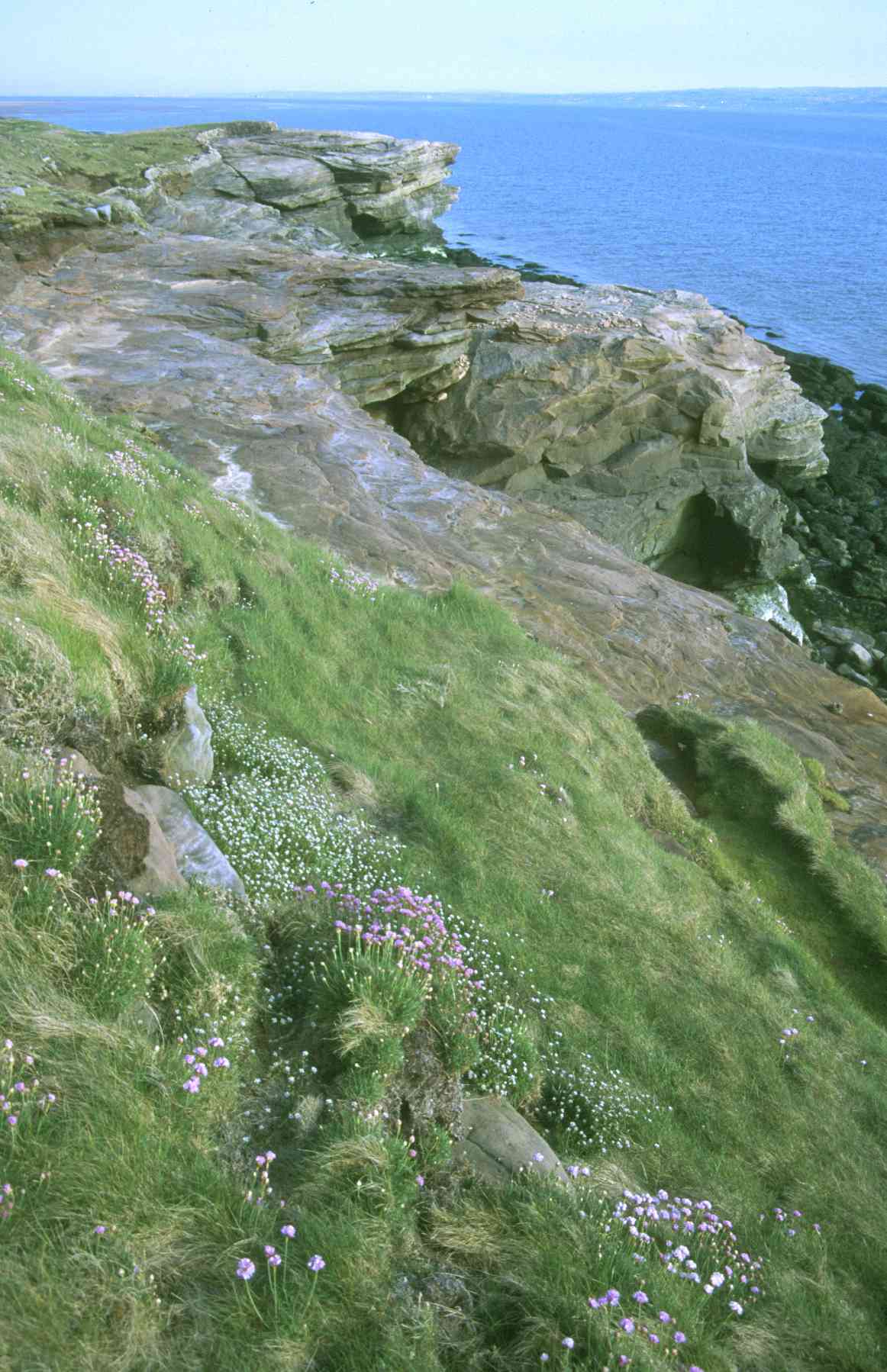
 |
WELCOME TO CHESHIRE BIODIVERSITY
|
|
| HOME | INTRODUCTION | SPECIES | HABITATS | PARTNERS | WHAT'S NEW | WHAT'S ON | OTHER INFO |
 Current
Status
Current
Status The species of Limonium which
are endemic to Britain all belong to the Limonium binervosum aggregate
(rock sea-lavenders). The taxonomy of this group was revised in 1986 and nine
species and numerous infra-specific taxa are now recognised. Of the nine species,
eight are believed to be endemic to Britain, these are Limonium britannicum,
L. dodartiforme, L. loganicum, L.paradoxum, L. parvum, L. procerum, L. recurvum
and L. transwallianum. These species grow almost exclusively on rocks
and sea-cliffs of a wide range of geological types although a few have also
been recorded from other habitats.
All known colonies of the endemic rock sea-lavenders are confined to the west
coasts of England and Wales between Dorset and Cumbria, with different species
predominating on different stretches of coast. There is little evidence that
these Limonium taxa have declined significantly. However, conservation
action is proposed because of their endemic status and small population sizes.
Limonium britannicum ssp. celticum is listed in the RDB as NEAR THREATENED. It is confined to North Wales, Cheshire, Lancashire and Cumbria and is recorded in three 10 km squares in North West Britain. In Wirral, the plant occurs on Hilbre Island, off the west coast of the Wirral peninsula at the mouth of the Dee estuary. There are two colonies approximately 220m apart, containing 1000+ and 100+ plants respectively.
Of the endemic taxa, nine are classified as VULNERABLE and the other six as NEAR THREATENED. They receive general protection under the Wildlife and Countryside Act 1981, although none are specially protected under Schedule 8.
 Threats
Threats
OBJECTIVES |
LOCAL TARGETS |
|
Maintain and, ideally, extend current local range and distribution of Rock sea-lavender. |
Maintain a viable population of the species on Hilbre Island. |
ACTIONS REQUIRED |
|
|
|
| 1997 - 2006 Action Completed |
|
This
plan is in the Wirral Biodiversity Action Plan which can be viewed at
www.wirral.gov.uk/ed/biodiversity/home.htm
National Trust website - http://www.nationaltrust.org.uk/main/w-chl/w-countryside_environment/w-nature/w-nature-wildlife/w-wildlife-bap/w-nature-wildlife-bap-lavender.htm
Botanical Society of the British Isles -
http://www.bsbi.org.uk/
UK Grouped BAP for Rock Sea-Lavenders - www.ukbap.org.uk/UKPlans.aspx?ID=412
| LBAP Chair |
D. Cavanagh, Hilbre Island
LNR Barbara Greenwood, Wirral Wildlife |
| National Lead Partners | National
Trust Botanical Society of the British Isles |
| National Lead Contacts | Alex Lockton, Botanical Society of the British Isles |
HMSO (1995): Biodiversity:
The UK Steering Group Report, Volume 2: Action Plans, London.
HMSO (1995): Biodiversity: The UK Steering Group Report, Volume 1: Meeting the
Rio Challenge, London.
Ingrouille, M.J. and Stace, C.A. (1986), 'The L. binervosum Aggregate
(Plumbaginaceae) in the British Isles' in The Botanical Journal of
the Linnean Society, Vol 92, pp. 177-217.
Wigginton, M.J. (1999). British Red Data Books: Volume 1 - Vascular Plants
(3rd Edition), Joint Nature Conservation Committee, Peterborough.
Rodwell, J.S. (ed.) (2000), British Plant Communities: Volume 5, Cambridge
University Press, Cambridge.
| HOME | INTRODUCTION | SPECIES | HABITATS | PARTNERS | WHAT'S NEW | WHAT'S ON | OTHER INFO |
|